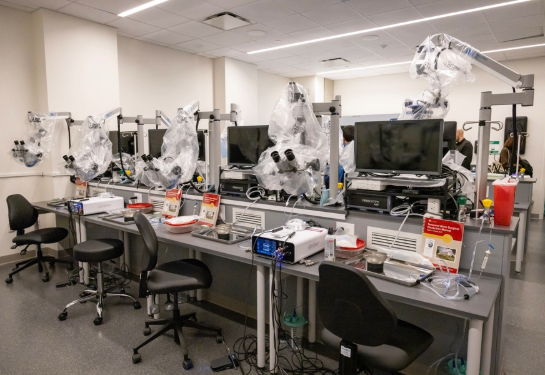UC Davis researchers explore new angle on pancreatic islet function
Metabolic researchers at UC Davis have illuminated a complex mechanism associated with type 2 diabetes and may have discovered a promising therapeutic target in the process. The study found that the signaling protein 14-3-3-zeta can tell pancreatic alpha cells to produce the antidiabetic hormone GLP-1. This work was published in the journal Science Advances.

“Our lab was the first to identify that 14-3-3-zeta plays this important role in pancreatic islet GLP-1 production,” said Bethany Cummings, associate professor of surgery and senior author on the study.
“We've shown that 14-3-3-zeta induces alpha cells to produce GLP-1, which provides insights into how we may be able to better target the islet for diabetes treatment,” explained Cummings, who specializes in metabolic research and endocrinology.
Type 2 diabetes affects around 37 million people in the U.S., more than 10% of the population. It involves hormone-producing pancreatic islet cells. The disease involves a complex dance between alpha cells, which produce glucagon, and beta cells, which produce insulin. While insulin reduces blood glucose levels, glucagon increases them, balancing this essential metabolic equation. Not surprisingly, glucagon is often elevated in type 2 diabetes.

The body also produces a hormone called GLP-1, which promotes insulin secretion. GLP-1 is usually made in the gut but, under certain circumstances, can be synthesized by alpha cells.
“One of biology’s interesting tricks is that alpha cells can be shifted around to make GLP-1 rather than glucagon,” Cummings said. “Glucagon and GLP-1 share the same precursor protein, and, if we turn on certain enzymes, the alpha cell can switch how it processes that protein and basically make a hormone that lowers blood glucose instead of a hormone that raises blood glucose.”
As a result, GLP-1 receptor agonists, such as the drug liraglutide, have become an important class of diabetes drugs. Previous work by the Cummings lab showed that liraglutide activates alpha cell GLP-1 production. In this study, the team wanted to know how liraglutide encourages alpha cells to make GLP-1.
Our lab was the first to identify that 14-3-3-zeta plays this important role in pancreatic islet GLP-1 production.” —Bethany Cummings, associate professor of surgery
They found that GLP-1 receptor signaling in beta cells downregulates 14-3-3-zeta, which in turn activates GLP-1 production in alpha cells.
“This was an incredibly challenging project that actually constituted several studies in one,” Cummings said. “I am proud of my team and the lead author Marlena Holter for her hard work, dedication and creativity.”
The lab will continue to dissect these complex mechanisms. While 14-3-3-zeta is potentially a good therapeutic target, there may be better ones downstream. The lab will continue to probe this pathway to identify other, perhaps more accessible, targets.
“We have demonstrated that this has relevance in human pancreatic islet cells, but the next step is applying these findings to improve type 2 diabetes treatments,” Cummings said. “This work is an important step towards understanding how islet cells talk to one another and how alpha cell hormone production is regulated. Understanding these processes is critical to developing improved therapeutic approaches for diabetes.”



